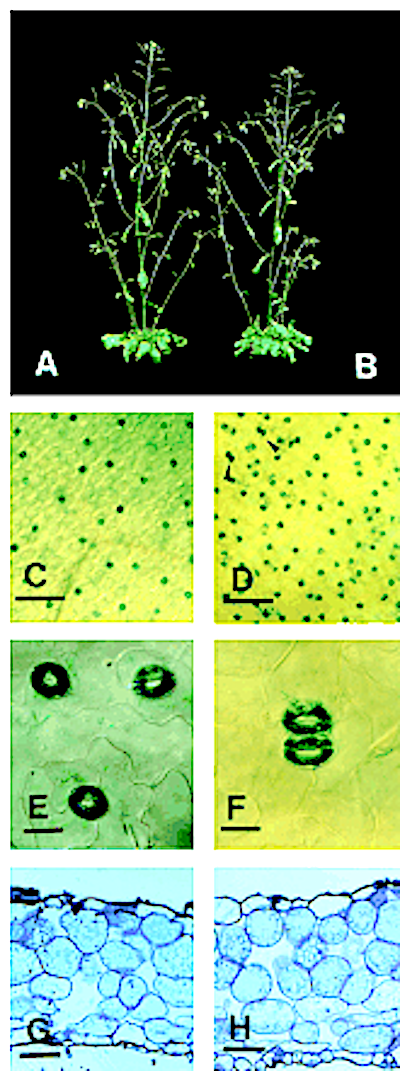Photosynthetic performance of an Arabidopsis mutant with elevated stomatal density (sdd1–1) under different light regimes
Schlüter U., Muschak M., Berger D., Altmann T. (2003)
Urte Schlüter, Michael Muschak, Dieter Berger, Thomas Altmann,
Max-Planck-Institute of Molecular Plant Physiology, Am Muhlenberg 1, D-14424 Golm, Germany
===
J. Exp. Bot. 54: 867–874 – PMID: 12554730 – DOI: 10.1093/jxb/erg087 –
https://pubmed.ncbi.nlm.nih.gov/12554730
Abstract
In the Arabidopsis mutant sdd1-1, a point mutation in a single gene (SDD1) causes specific alterations in stomatal density and distribution. In comparison to the wild type (C24), abaxial surfaces of sdd1-1 rosette leaves have about 2.5-fold higher stomatal densities. This mutant was used to study the consequence of stomatal density on photosynthesis under various light regimes. The increased stomatal density in the mutant had no significant influence on the leaf CO(2) assimilation rate (A) under constant light conditions. Mutant and wild-type plants contained similar amounts of carbohydrates under these conditions. However, exposure of plants to increasing photon flux densities resulted in differences in gas exchange and the carbohydrate metabolism of the wild type and mutant. Increased stomatal densities in sdd1-1 enabled low-light-adapted plants to have 30% higher CO(2) assimilation rates compared to the wild type when exposed to high light intensities. After 2 d under high light conditions leaves of sdd1-1 accumulated 30% higher levels of starch and hexoses than wild-type plants.

You must be logged in to post a comment.